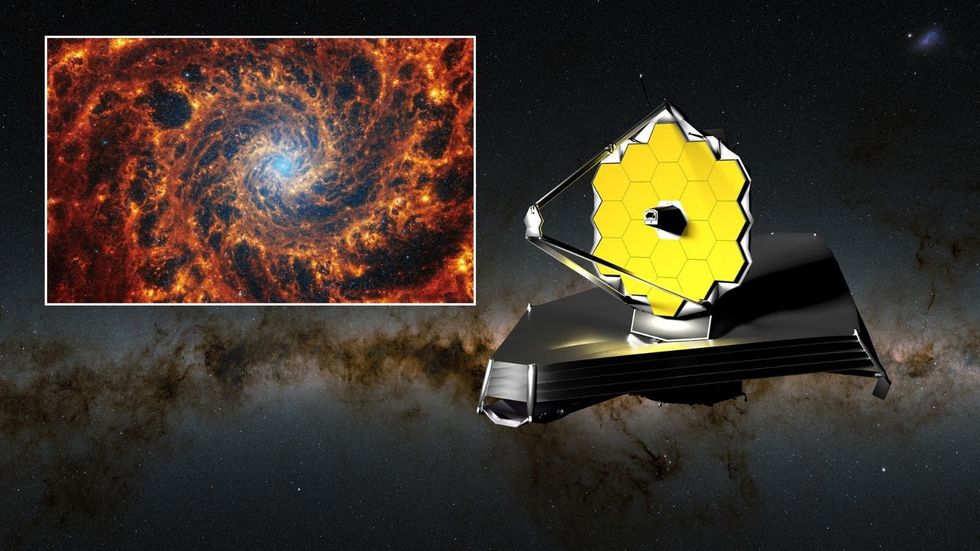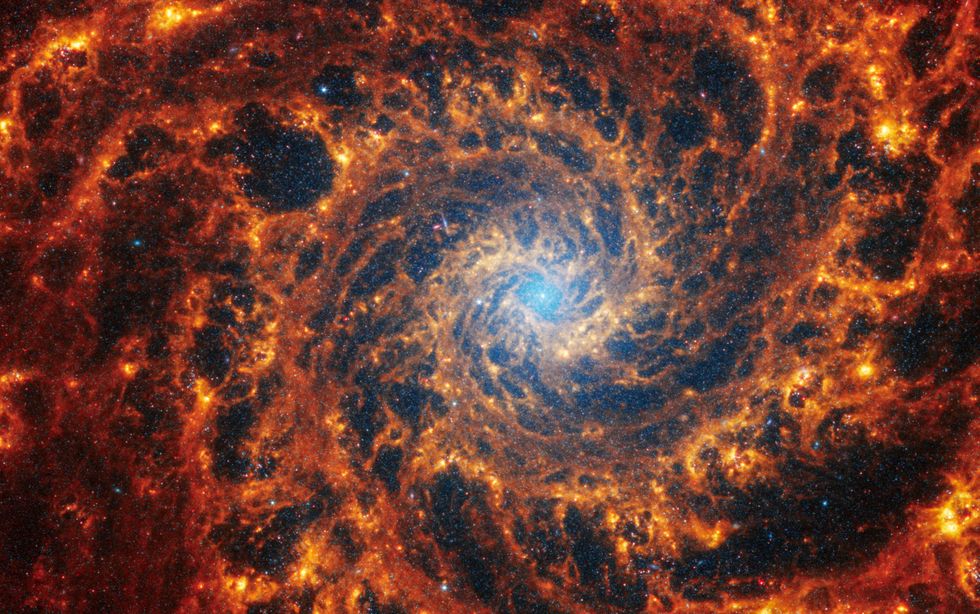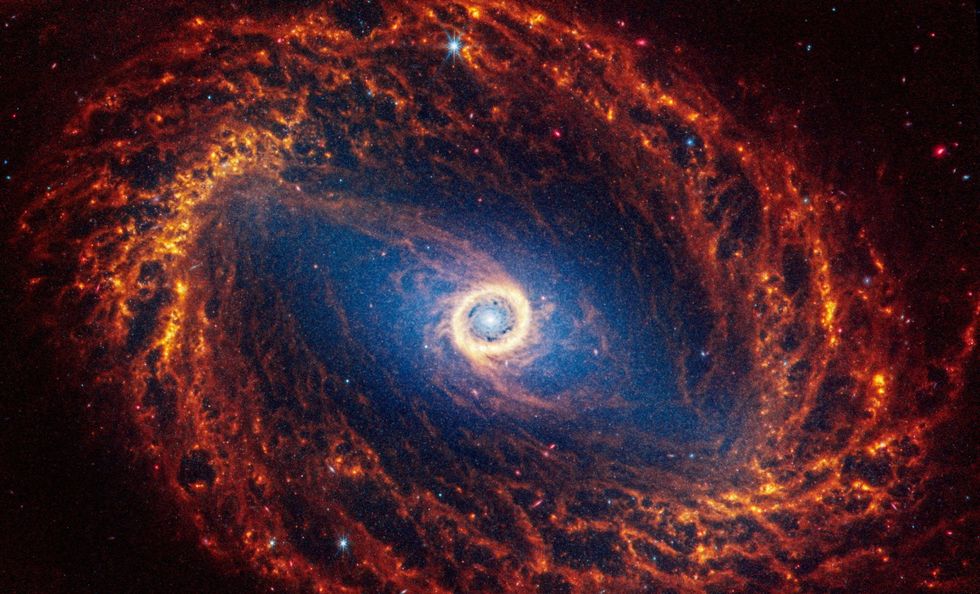James Webb telescope captures breathtaking photos of spiral clusters beyond our own galaxy

Photos of the Milky Way-like spiral galaxies, showing stars, gas and dust
Don't Miss
Most Read
Latest
New images captured by a James Webb Space Telescope have revealed a "treasure trove" of 19 nearby spiral galaxies.
Photos of the Milky Way-like spiral galaxies, showing stars, gas and dust were released by NASA and partner agencies and will be studied by scientists.
The telescope - which launched on Christmas Day in 2021 - is unique in its ability to capture images of objects so distant and in such detail.
Following the discovery, the European Space Agency say analysis will "advance our understanding of star formation and the evolution of spiral galaxies".

New images captured by a James Webb Space Telescope have revealed a 'treasure trove"' of 19 nearby spiral galaxies
|Reuters/ Getty
The research programme named Physics at High Angular resolution in Nearby GalaxieS (PHANGS) operates across several major astronomical observatories.
According to scientists behind the project, the closest of the 19 galaxies is called NGC5068 which is located around 15 million light years from Earth, and the most distant of them is NGC1365 - 60 million light years from Earth.
Spiral galaxies, resembling pinwheels, are a common galaxy type which includes the Milky Way.
University of Oxford astronomer Thomas Williams, who led the team's data processing on the images said: "These data are important as they give us a new view on the earliest phase of star formation.
LATEST DEVELOPMENTS:

Photos of the Milky Way-like spiral galaxies, showing stars, gas and dust were released by NASA
|Reuters
"Stars are born deep within dusty clouds that completely block out the light at visible wavelengths - what the Hubble Space Telescope is sensitive to - but these clouds light up at the JWST wavelengths.
"We don't know a lot about this phase, not even really how long it lasts, and so these data will be vital for understanding how stars in galaxies start their lives."
Around half of spiral galaxies have a straight structure, called a bar, coming out from the galactic centre to which the spiral arms are attached.
Williams added: "The commonly held thought is that galaxies form from the inside-out, and so get bigger and bigger over their lifetimes. The spiral arms act to sweep up the gas that will form into stars, and the bars act to funnel that same gas in towards the central black hole of the galaxy."

The telescope - which launched on Christmas Day in 2021 - is unique in its ability to capture images of objects so distant and in such detail
|Reuters
Astronomer Janice Lee from the Space Telescope Science Institute in Baltimore explained that the images tell a story about the cycle of star formation and feedback.
"The images are not only aesthetically stunning, they also tell a story about the cycle of star formation and feedback, which is the energy and momentum released by young stars into the space between stars," she said.
"It actually looks like there was explosive activity and clearing of the dust and gas on both cluster and kiloparsec (roughly 3,000 light years) scales.
"The dynamic process of the overall star formation cycle becomes obvious and qualitatively accessible, even for the public, which makes the images compelling on many different levels."











